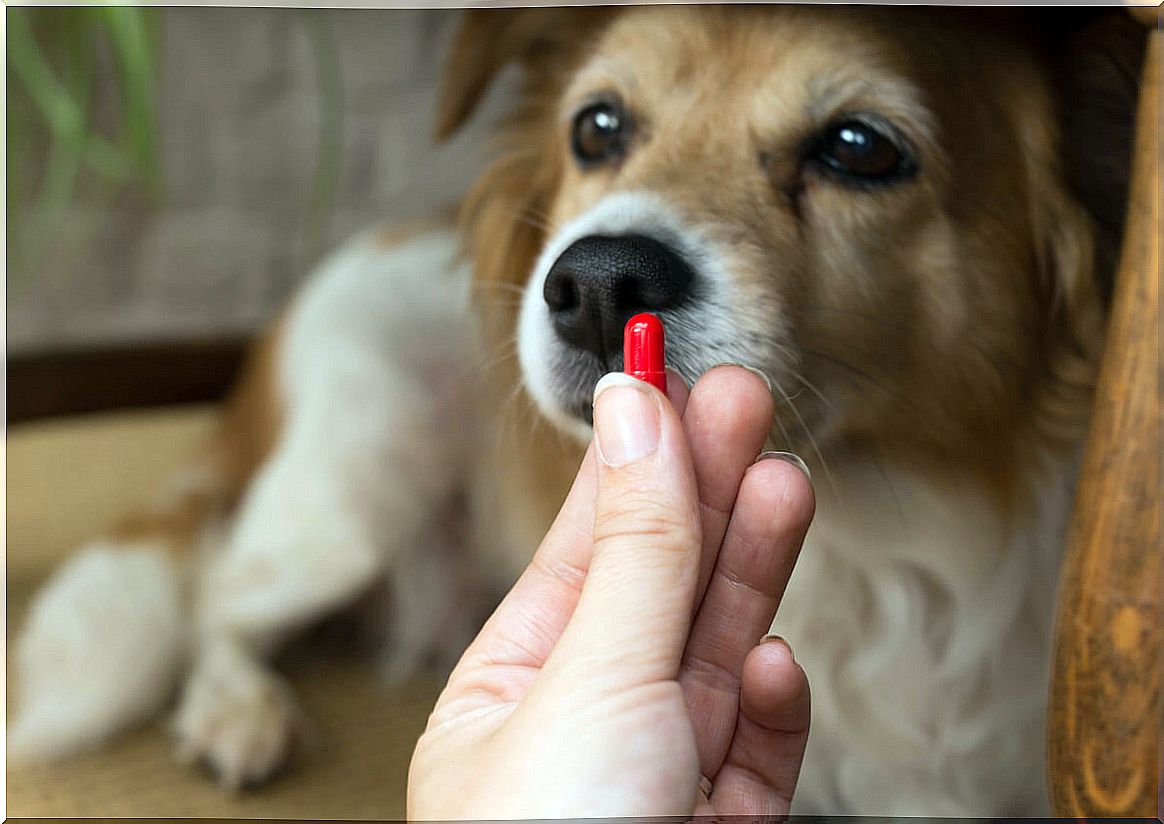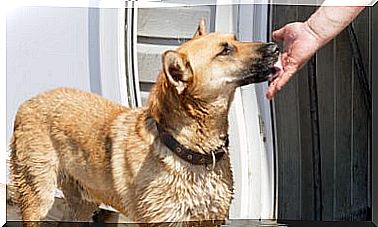What Are The Uses Of Clindamycin In Dogs?

Veterinary medications for dogs, especially prescription drugs, such as antibiotics such as clindamycin, cannot be given lightly. If you think your dog needs medication or you suspect an ailment in your pet, you should always go to the vet to confirm a diagnosis and apply the appropriate treatment.
If you do not agree with the procedure that the professional chooses or do not see progress in your pet’s health, you always have the option of requesting a second opinion from another veterinarian. In the following lines we show you the uses of clindamycin in dogs, but do not take them as a substitute for a consultation.
Types of drugs in the veterinary clinic
Before talking about clindamycin, it is necessary to briefly explore the world of drugs. Medicines, in the field of veterinary medicine, can be divided based on their therapeutic use or from a legal point of view.
The first classification is broader, since it refers to the function and place of action of the drug. The types of drugs that we can distinguish are the following:
- Antibiotics : they are used in any bacterial infectious disease. Within this group we also find different types of classification according to their spectrum of action and function. For example, clindamycin has action on various species of Staphylococcus and Streptococcus .
- Antifungals : These drugs kill fungus. The most used are itraconazole and fluconazole.
- Internal and external antiparasitics : these are the ones usually bought by tutors in the clinic to deworm pets.
- Anti-inflammatories : these are symptomatic — not curative — drugs that reduce inflammation caused by trauma, illness, or surgery.
- Antiseptics and disinfectants : they are for topical use and are used to control or prevent skin infections.
- Medications with cardiovascular, renal, respiratory or neurological action.
- Medications with action on the reproductive system.
- Fluid therapy : those drugs that are administered intravenously to hospitalized animals.
- Biological : this group includes vaccines, specific to each species, such as rabies, kennel cough or leishmaniasis, among others.

Medicines with local action are usually those prescribed for the treatment of specific diseases such as hypertension, kidney disease, digestive problems, to alleviate pain and many other conditions.
The second classification that we have named you in the first lines takes into account the legal aspects that accompany each drug. These two categories include all the previous types:
- Compulsory prescription drugs by collegiate veterinarians, such as antibiotics or certain specific action drugs. Some have special recipes, such as narcotics.
- Over-the-counter medications.
What is clindamycin and what does it do in dogs?
Clindamycin is in the group of antibiotics, making it a drug that fights bacterial infections. These pathogens are not only eliminated by killing them directly, but their vital functions can be affected, ultimately reducing their burden.
Specifically, clindamycin belongs to the family of lincosamides, which are antibiotics that inhibit bacterial protein synthesis. This drug works mainly on anaerobic organisms, such as some species of the genera Staphylococcus, Streptococcus, Bacteroides, Clostridium and Fusobacterium .
The inhibition of protein synthesis is possible thanks to the structural differences between ribosomes of eukaryotes – multicellular beings – and prokaryotes – unicellular beings -, such as bacteria and protozoa.
The components of bacterial ribosomes are detected by clindamycin, so that the drug paralyzes bacterial production in the body. This medicine is a bacteriostatic, although it can also be bactericidal, depending on its concentration and the microorganism against which it acts.
Main uses of clindamycin in dogs
This antibiotic is used in both dogs and cats. It is contraindicated in other animals such as rabbits, guinea pigs, hamsters, chinchillas, horses or ruminants, as they can cause serious gastrointestinal disorders in them.
In dogs, the uses for clindamycin are typically as follows:
- For the treatment of infected wounds, abscesses and infections of the oral cavity caused by or related to clindamycin-sensitive species of the genera Staphylococcus, Streptococcus, Bacteroides , or by Clostridium perfringens and Fusobacterium necrophorum .
- Complementary medicine for the treatment of gingival or periodontal infections.
- For the treatment of osteomyelitis caused by Staphylococcus aureus .
The dose administered should always be that indicated by the veterinarian, for as long as he sees fit. Following this strictly is very important in the use of antibiotics to avoid relapses and resistance of pathogens. It is also essential not to mix clindamycin with other veterinary drugs such as chloramphenicol.
In addition, special care must be taken when offering these medications to dogs with kidney and / or liver problems. In these cases, tests may be necessary to see the status of the animal’s liver and kidneys in response to treatment.

Finally, it is necessary to note that clindamycin is administered only orally and its period of validity is specified on the box. Do not use any medication once it has expired.









